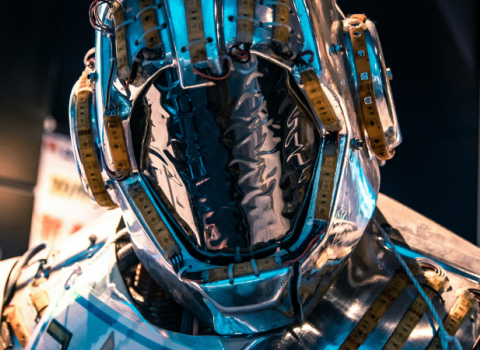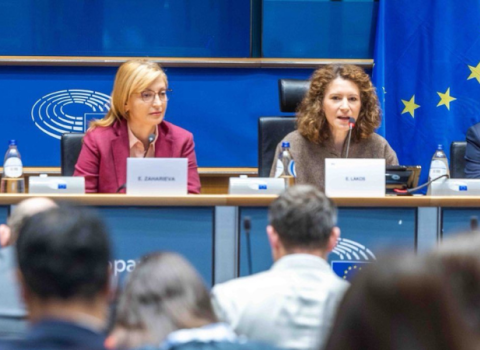The six front runners in the race to be chosen as Europe’s information and communication technology research flagships were announced at the Future and Emerging Technologies (FET) Conference in Budapest yesterday (4 May).
The projects, selected by peer review from 21 submissions from researchers all over Europe, have been awarded €1.5 million each, and now have a year to develop and refine their proposals before the final beauty parade in which two will be selected for Flagship status and a promised budget of €1 million each over ten years.
The ambition for these two flagships is to deliver major breakthroughs in information and communication technologies that will create important new markets and deliver significant social benefits by helping to deal with problems like chronic disease, climate change and natural disasters.
Neelie Kroes, European Commission vice president likened the potential impact of these projects to the Apollo mission to the moon. “Remember the space race? Let us make more successes we will remember not just for today, but for a lifetime,” she told delegates.
The selected projects include research to develop semiconductors based on the new wonder material graphene – which combines the ability to let electrons flow much faster than silicon, with the facility to mix electrical and optical functions; moves to develop computer simulations of the human brain and body that can then be fed with data from individual patients to diagnose disease and establish the best treatment; the development of wearable nanosensors that operate with energy harvested from the environment, allowing them to continually monitor factors such as heart rate, blood sugar level and body temperature; building a computer model of how societies operate as a kind of “flight simulator” that can be used to model the effects of policy decisions and help deal with natural disasters; and the development of empathetic robot companions that can help out at home and in hospitals.
The plan to set up the Flagships was announced at the previous FET meeting, held in Prague in 2009. The aim is to pool resources to overcome the national fragmentation in fundamental ICT research, through ten-year multi-million Euro joint national/EU initiatives that cross-fertilise ICT with other disciplines. This should enable European researchers to explore more risky areas, leading to revolutionary breakthroughs. Although the Prague gathering was the first FET conference, the programme itself is now more than 20 years old. As the only basic research effort until the advent of the European Research Council in 2007, it seen as one of the crown jewels of EU-funded research.
Pulling together multidisciplinary projects
The six projects announced yesterday are each led by a single institution, but will pull together dozens of collaborators across Europe, from academe and industry. They also look beyond traditional ICT research to link up with specialists in health, materials science, robotics and various biological sciences. For example, the Human Brain Project, led by Henry Markram at École Polytechnique Fédérale de Lausanne, includes 13 other universities and brings together more than one hundred organisations covering disciplines including neuroscience, genetics, applied mathematics computer science, robotics and social sciences.
Similarly, the Graphene project, headed by Jari Kinaret at Chalmers University of Technology in Sweden involves over 130 research groups, representing 80 industrial and academic partners in 21 European countries.
Kroes said the really important thing about the two eventual winners will be their scale. It has never been more important to invest in research, she said. “Unfortunately we are not making enough of the right investments yet.” Budgets in Europe are too small scale, too focussed on public spending and too fragmented.
Firing the starting pistol on the race for Flagship status, Kroes said, “We are in a new era for ICT investment in Europe.” The envisaged spending of €100 million per project over ten years will put Europe, “on a path to scientific leadership.”
Flagships to help build a single digital market
The FET Flagships will take a potential weakness of Europe, with its division into separate member states, and build one single digital market. While they are expected to deliver important scientific advances, the Flagships will be equally important in terms of the social benefits they will bring, Kroes claimed.
Armed with the € 1.5 million they have been awarded, the six projects are now expected to build governance and financial structures and get the commitment of external funders. The action plan for each projects will be submitted in April 2012, with the two chosen Flagships due to get underway in 2013.
Kroes concluded by saying that if they are successful the Flagships will have the pull and influence of world-leading research projects such as CERN.
The six finalists are:
• FuturICT Knowledge Accelerator and Crisis-Relief System: applying ICT to analyse vast amounts of data and complex situations so as to better predict natural disasters, or manage and respond to man-made disasters, such as the recent global financial crisis, that cross national borders or continents
• Graphene Science and technology for ICT and beyond: A new substance developed by atomic and molecular scale manipulation, Graphene has the potential to replace silicon as the wonder material of the 21st century.
• Guardian Angels for a Smarter Life: nanoscale devices, without batteries, that act like autonomous personal assistants, and which can sense, compute and communicate - potentially even while travelling through the bloodstream.
• The Human Brain Project: creating a simulation of the human brain for use in medical research and healthcare, but also as a model for the development of future computers
• IT Future of Medicine: applying ICT to deliver personalised medicine, based on molecular, physiological and anatomical data collected from individual patients and processed on the basis of globally integrated medical knowledge.
• Robot Companions for Citizens: developing soft-skinned and intelligent robots have highly developed perceptive, cognitive and emotional skills, and can help people, radically changing the way humans interact with machines.





 A unique international forum for public research organisations and companies to connect their external engagement with strategic interests around their R&D system.
A unique international forum for public research organisations and companies to connect their external engagement with strategic interests around their R&D system.